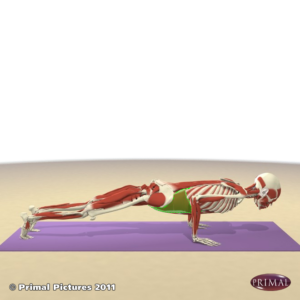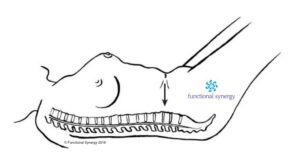By Susi Hately, B.Sc. Kinesiology
One of the things that truly lights me up is how to make movement patterns more efficient. Whether working on myself or with a client, this idea of becoming more efficient is consistently part of my wondering – I know that with greater efficiency comes better physical and mental integrity, better load absorption, dissipation and transfer, less pain, effortless effort, better energy management, more authenticity, and great opportunity to do more complex movements and activities.
It also improves core stability.
For some this may sound strange – improving movement patterns to improve core stability? Isn’t it the other way around – brace the abdomen and pull up the pelvic floor to reduce pain, then move? Maybe, yes, for a few people and perhaps at the very beginning of their awareness and movement training. However, if you really want to become more agile and more versatile in your movement repertoire, if you want to run faster, be lighter in your step and feel less constriction over all, you will want to graduate beyond bracing.
What do I mean by this?
Let’s look at a really common cue that is used in fitness, yoga and pilates classes – pull the navel to the spine. Initially this cue may be really helpful for some. Perhaps they are unaware of where their navel or abdomen is, maybe they have very little proprioception or little embodied knowledge of what a muscle contraction is, or what it feels like. If that is the case, then this instruction could be helpful – at the front end and for the short term.
Over the longer term, pulling the navel to the spine can lead to over-engaging the obliques, which can limit breathing, create rigidity and bracing which in turn can lead to less stability and strength. This can shift, what was a useful cue at the beginning stages of learning, to a compensation strategy which can lead to other problems.
What is the alternative? Here are some considerations:
- Think of core stability as providing the capacity to move from fast to slow, and slow to fast, to change directions. To do this you need agility, versatility and suppleness so that you can be responsive to both the movement and the environment in which the movement is occurring. If your belly is braced does that allow for responsiveness?
- Consider stability as the control and coordination that you have over a range of motion. This means that if you don’t have the control and coordination over a small range of motion you won’t have it over a bigger range of motion. It doesn’t make sense to train at the larger range until you have the necessary fundamentals in the small ranges. If you use the extra focus to practice in a more appropriate and optimal range, you’ll become so much more efficient, less fatigued and wonder why you are progressing so darn fast.
- Breathe.Your deepest core muscles interweave with your diaphragm, and the diaphragm works collectively with the pelvic floor floor, another important component of core stability. You want your diaphragm to move well. A great way for this to happen is to easily and simply breathe (stay tuned for more on this topic in an upcoming blog and video post).
More is coming with this Core Stability conversation, so keep your eyes open on this page.
In the meantime, have fun exploring.
